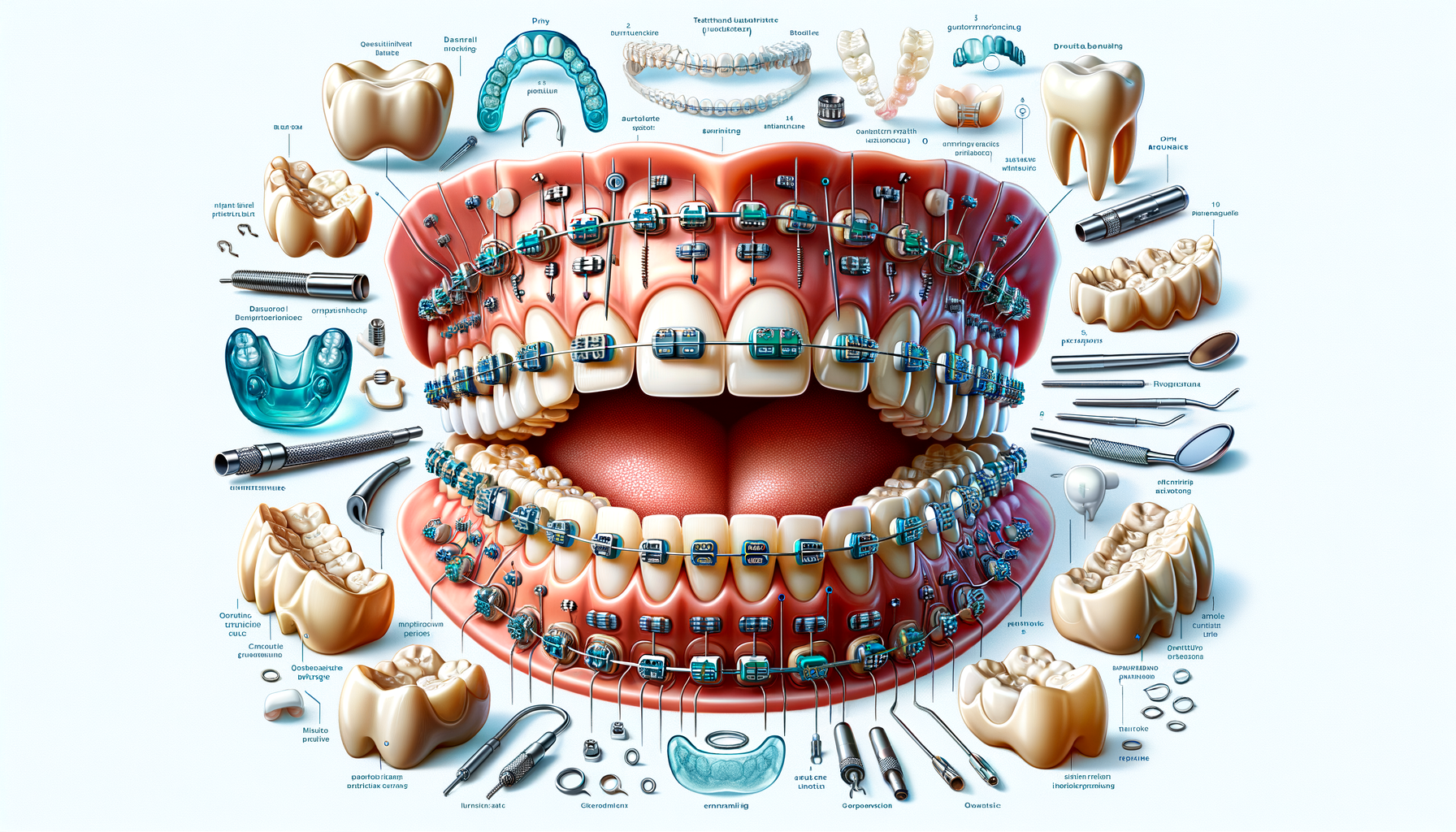Introduction to Dental Braces
Dental braces have become a common solution for individuals seeking to improve their dental health and aesthetics. These orthodontic devices are designed to align and straighten teeth, correct bite issues, and enhance overall oral health. The significance of dental braces extends beyond mere cosmetic appeal; they play a crucial role in preventing long-term dental problems and ensuring a healthy bite. By applying continuous pressure, braces gradually move teeth into the desired position, allowing for improved function and appearance.
Types of Dental Braces
When it comes to dental braces, there are several types available, each catering to different needs and preferences. Traditional metal braces are the most common, known for their durability and effectiveness. They consist of metal brackets and wires that are adjusted periodically to guide teeth into position. Ceramic braces, on the other hand, are less noticeable due to their tooth-colored brackets, making them a popular choice for those concerned with aesthetics.
Lingual braces offer a more discreet option as they are placed on the back of the teeth, making them virtually invisible from the front. However, they may not be suitable for all cases and can be more challenging to clean. Clear aligners have gained popularity in recent years due to their removable nature and minimal visibility. These custom-made trays are replaced every few weeks to gradually shift teeth into alignment.
Each type of brace comes with its own set of advantages and considerations. Factors such as cost, treatment duration, and personal comfort should be weighed when choosing the appropriate type of braces.
The Process of Getting Braces
The journey to achieving a perfect smile with braces begins with a consultation with an orthodontist. During this initial visit, the orthodontist will evaluate the patient’s dental structure, discuss treatment options, and create a personalized plan. Once a decision is made, the process of fitting the braces begins.
The actual placement of braces involves bonding brackets to the teeth and threading wires through them. This process is typically painless, although some patients may experience mild discomfort as they adjust to the new appliance. Regular follow-up appointments are essential to monitor progress and make necessary adjustments to the braces.
Throughout the treatment, maintaining good oral hygiene is crucial. Patients are advised to brush and floss regularly, and special tools may be provided to clean around the brackets and wires effectively. Following the orthodontist’s instructions diligently can lead to successful treatment outcomes and a beautiful smile.
Potential Challenges and How to Overcome Them
While dental braces offer numerous benefits, they can also present certain challenges. One common issue is discomfort or soreness, especially after adjustments. This can usually be managed with over-the-counter pain relief and a soft diet during the initial days following an adjustment.
Another challenge is maintaining oral hygiene. Food particles can easily get trapped in the brackets and wires, leading to plaque buildup and potential cavities. To combat this, patients are encouraged to use interdental brushes, water flossers, and fluoride mouthwash to keep their teeth and gums healthy.
Social and psychological factors can also play a role, particularly for younger patients who may feel self-conscious about their appearance. Encouragement and support from family and friends can help boost confidence during the treatment period. Additionally, choosing less noticeable options like ceramic braces or clear aligners can alleviate some of these concerns.
Life After Braces: Retainers and Maintenance
Completing orthodontic treatment with braces is a significant milestone, but it is not the end of the journey. To maintain the results achieved, wearing a retainer is crucial. Retainers help keep teeth in their new positions and prevent them from shifting back to their original alignment.
There are various types of retainers, including removable and fixed options. Removable retainers are typically worn full-time initially and gradually reduced to nighttime wear. Fixed retainers, on the other hand, are bonded to the back of the teeth and offer a more permanent solution.
Regular check-ups with the orthodontist are essential to ensure that the teeth remain in their desired positions. Maintaining good oral hygiene and attending follow-up appointments will contribute to the long-term success of orthodontic treatment.
In conclusion, dental braces are a valuable tool in achieving a healthy and beautiful smile. Understanding the different types of braces, the treatment process, and the importance of post-treatment maintenance can help individuals make informed decisions and enjoy the benefits of orthodontic care.




Leave a Reply